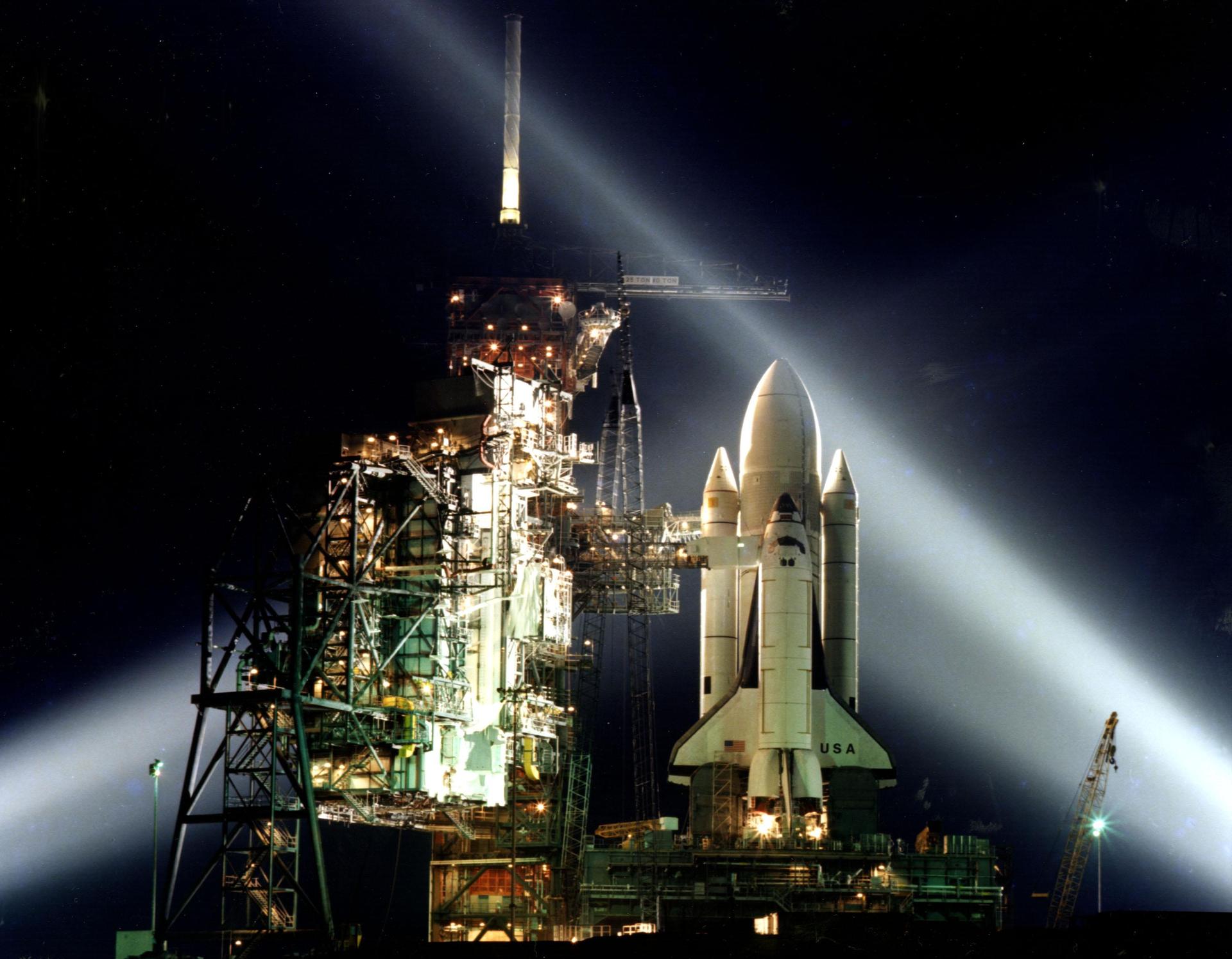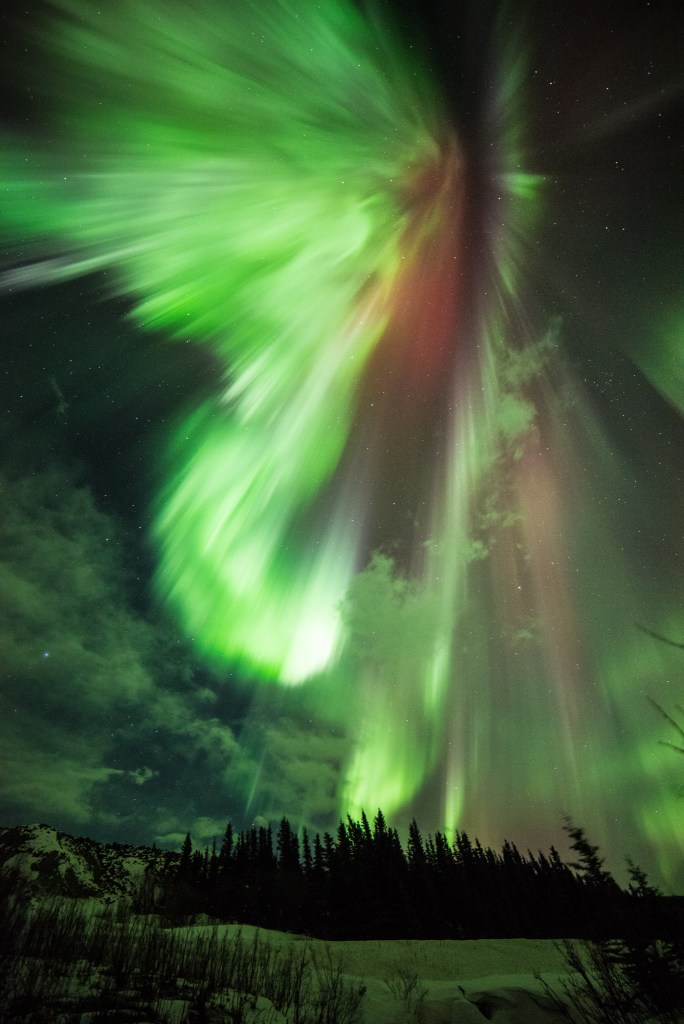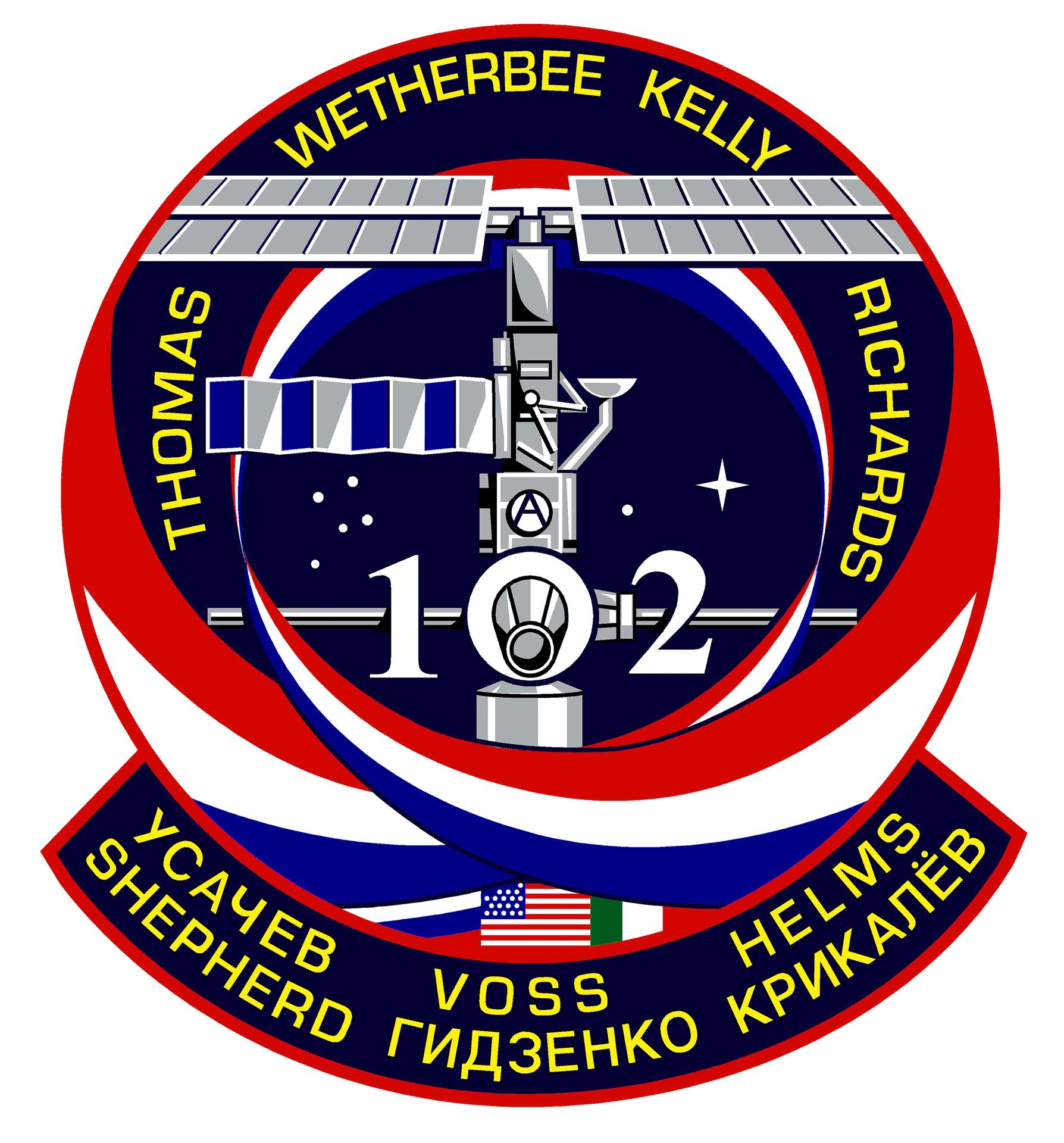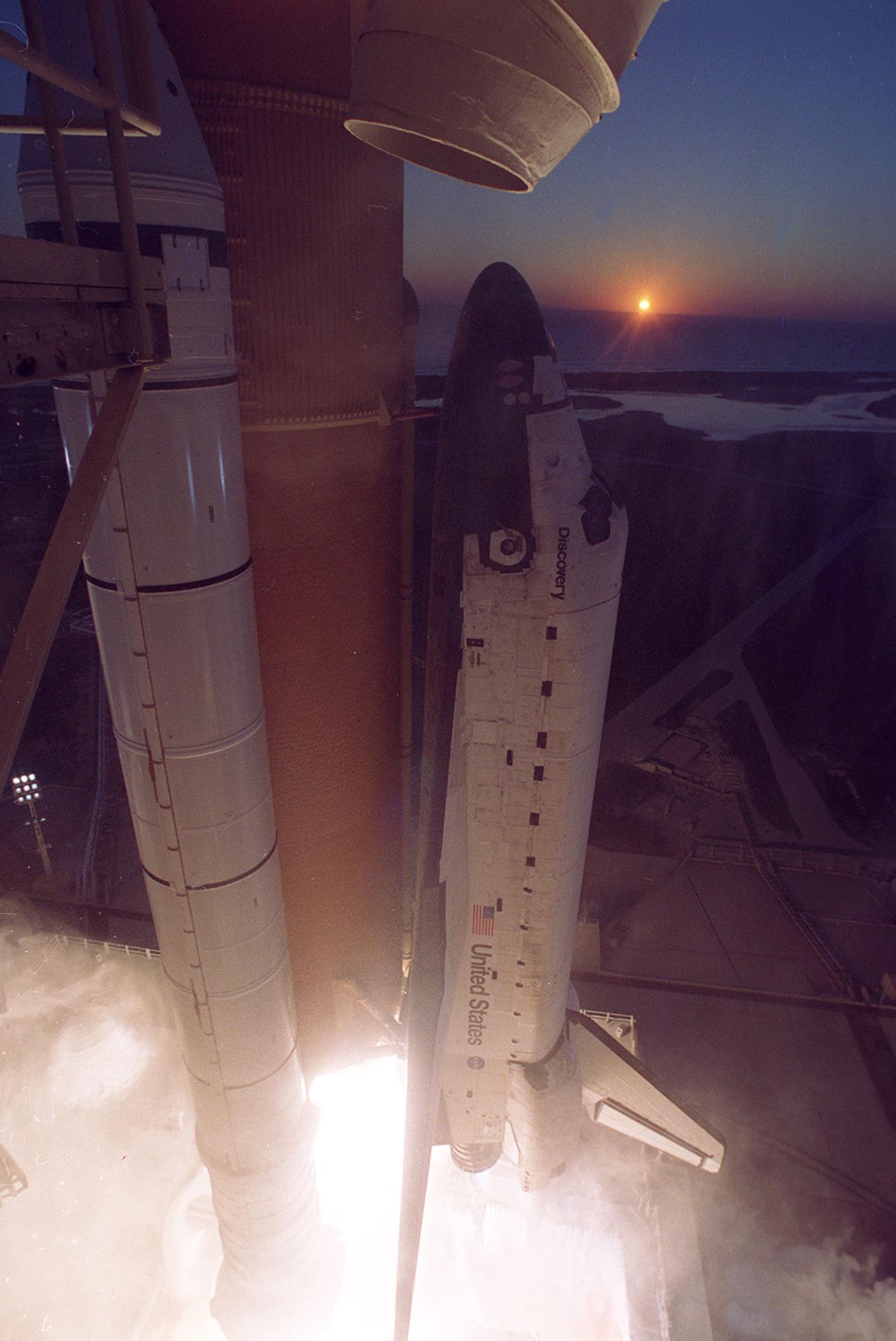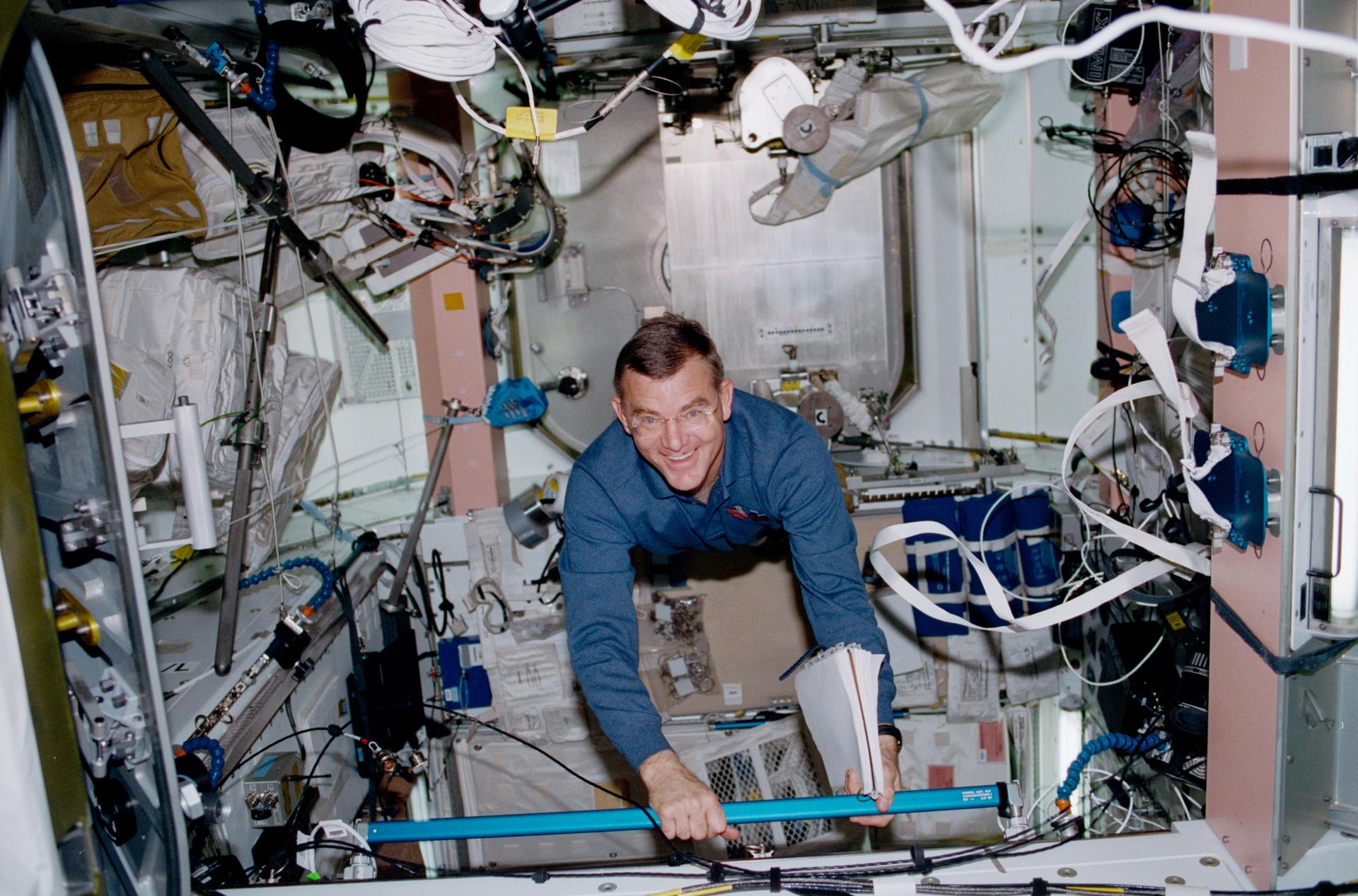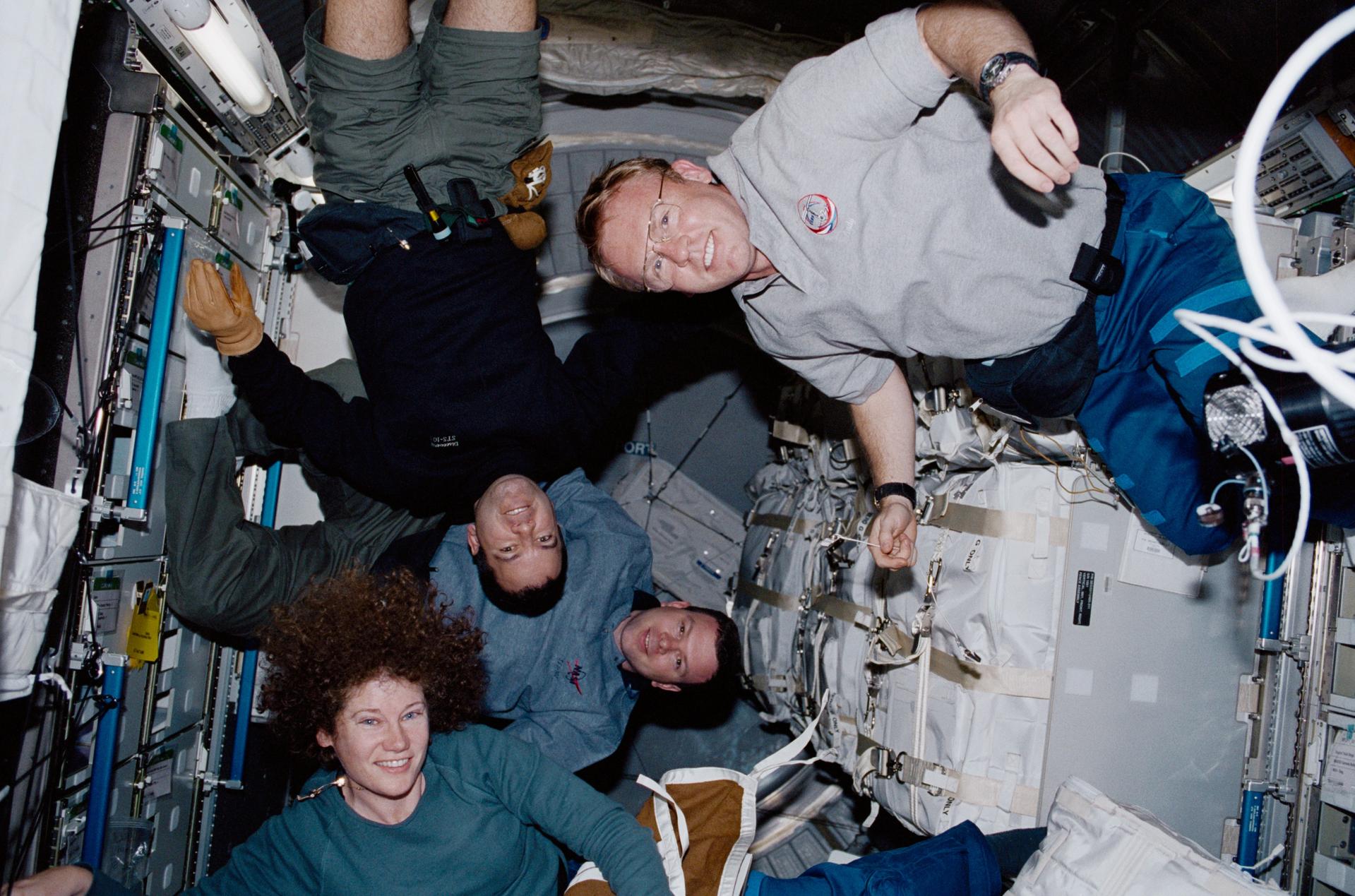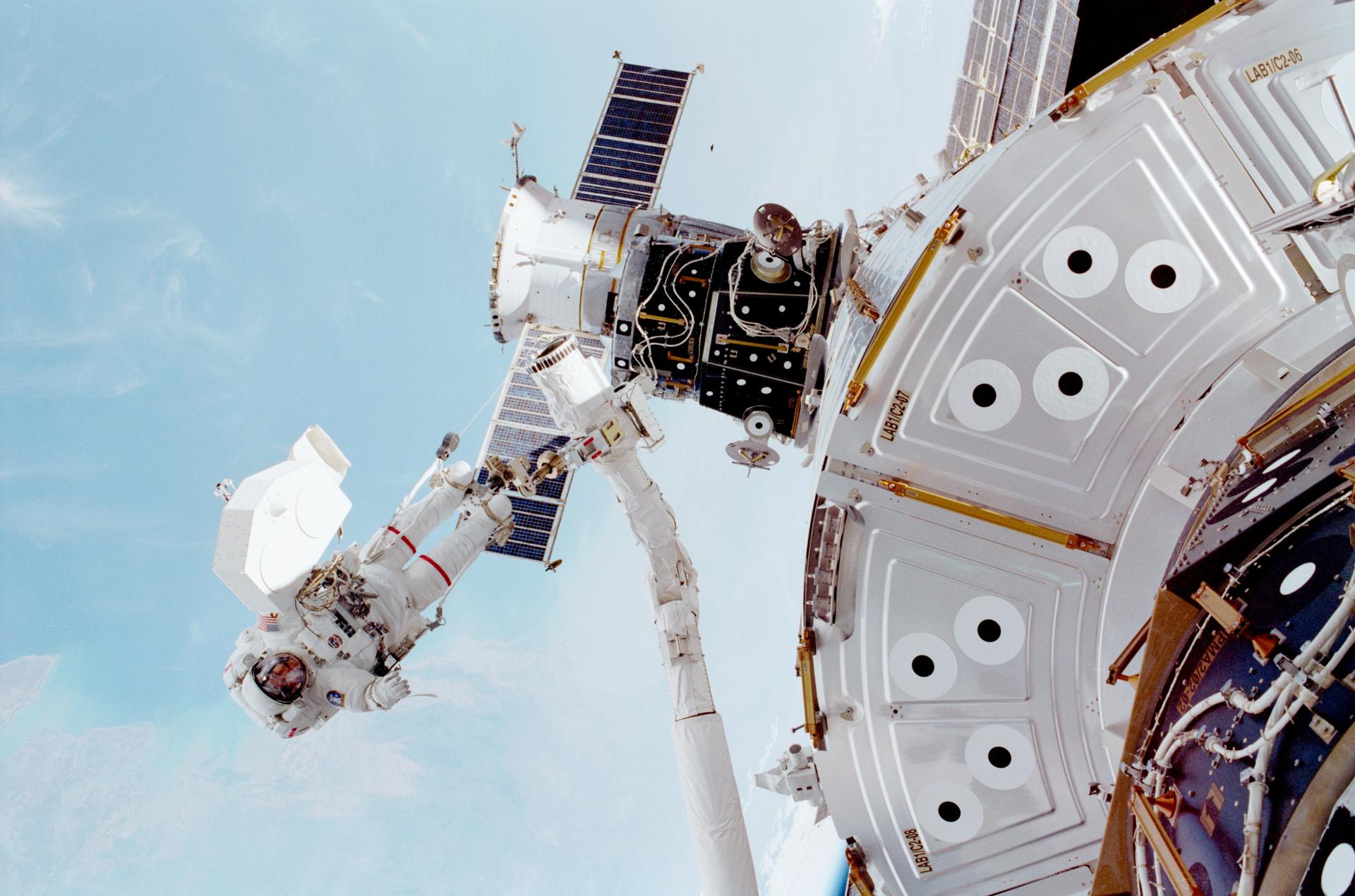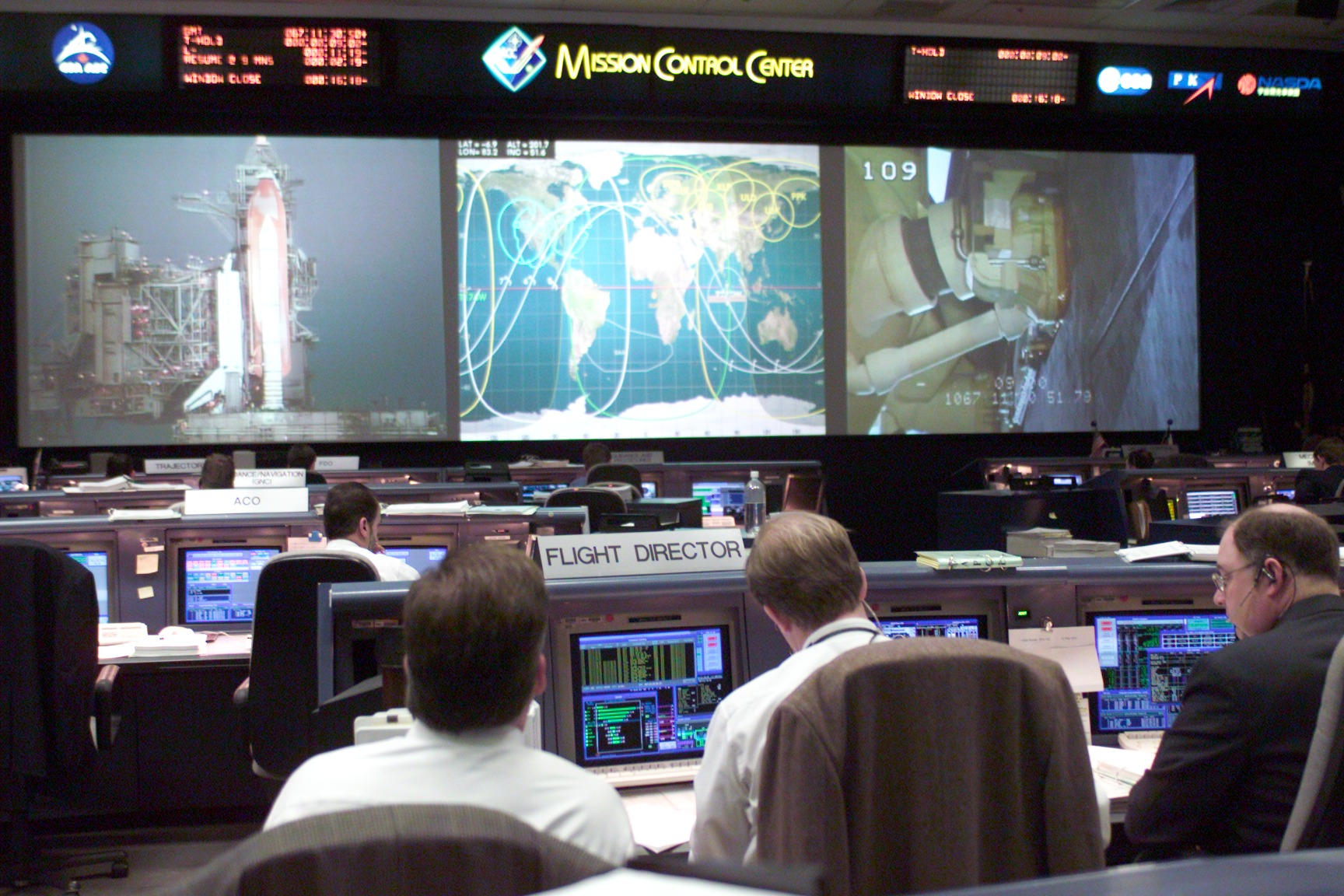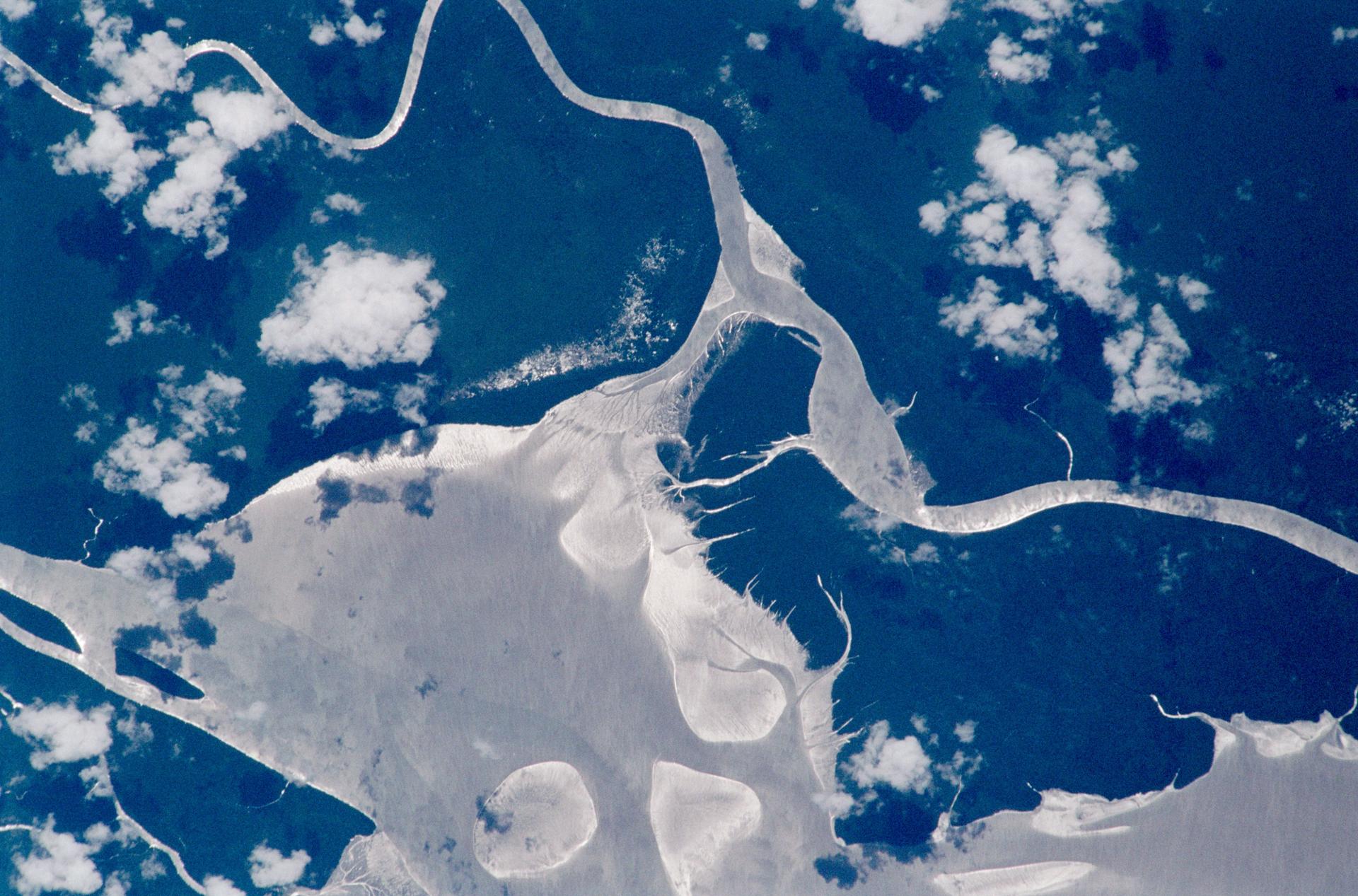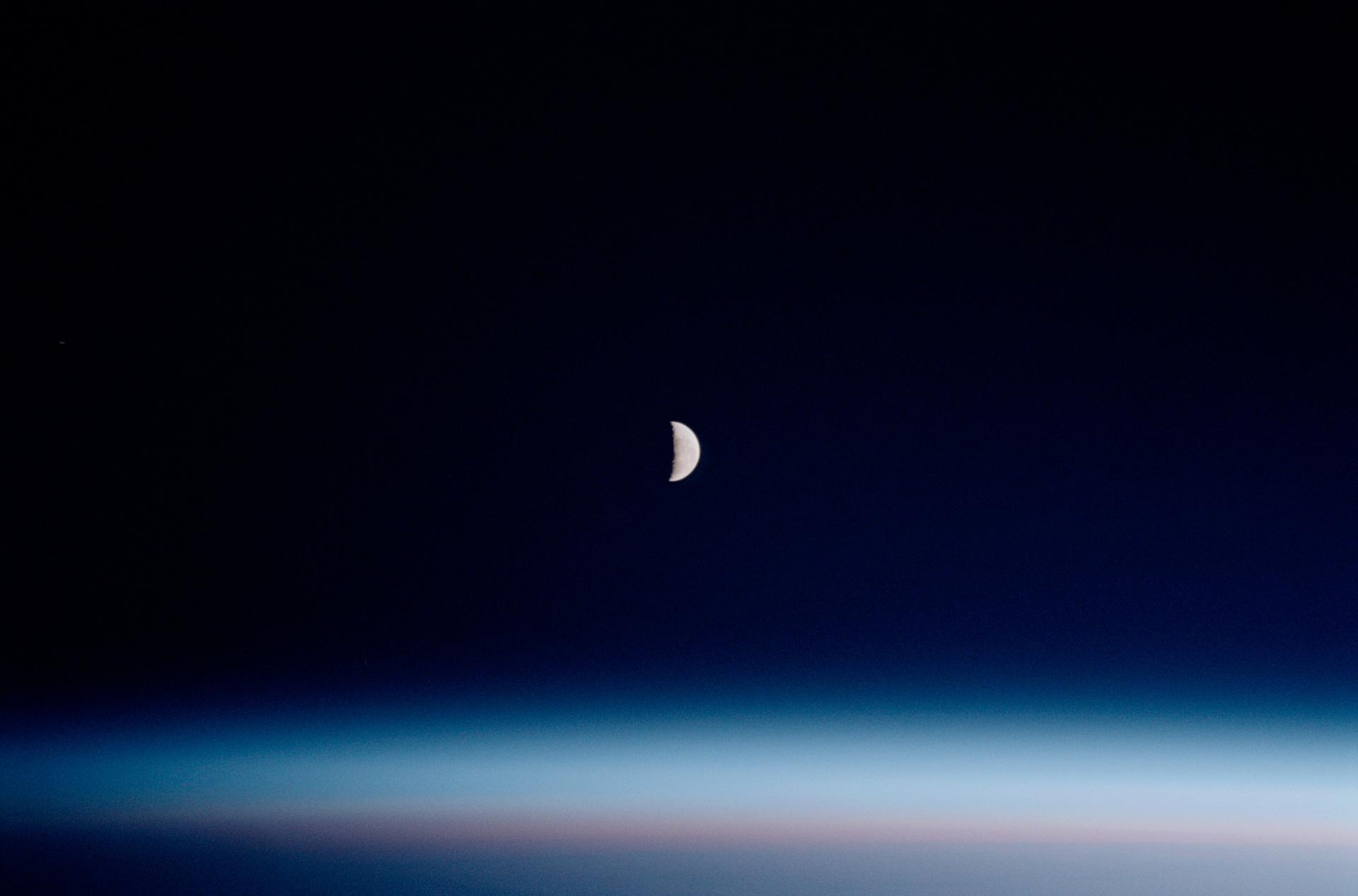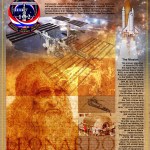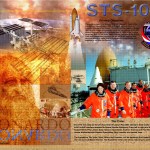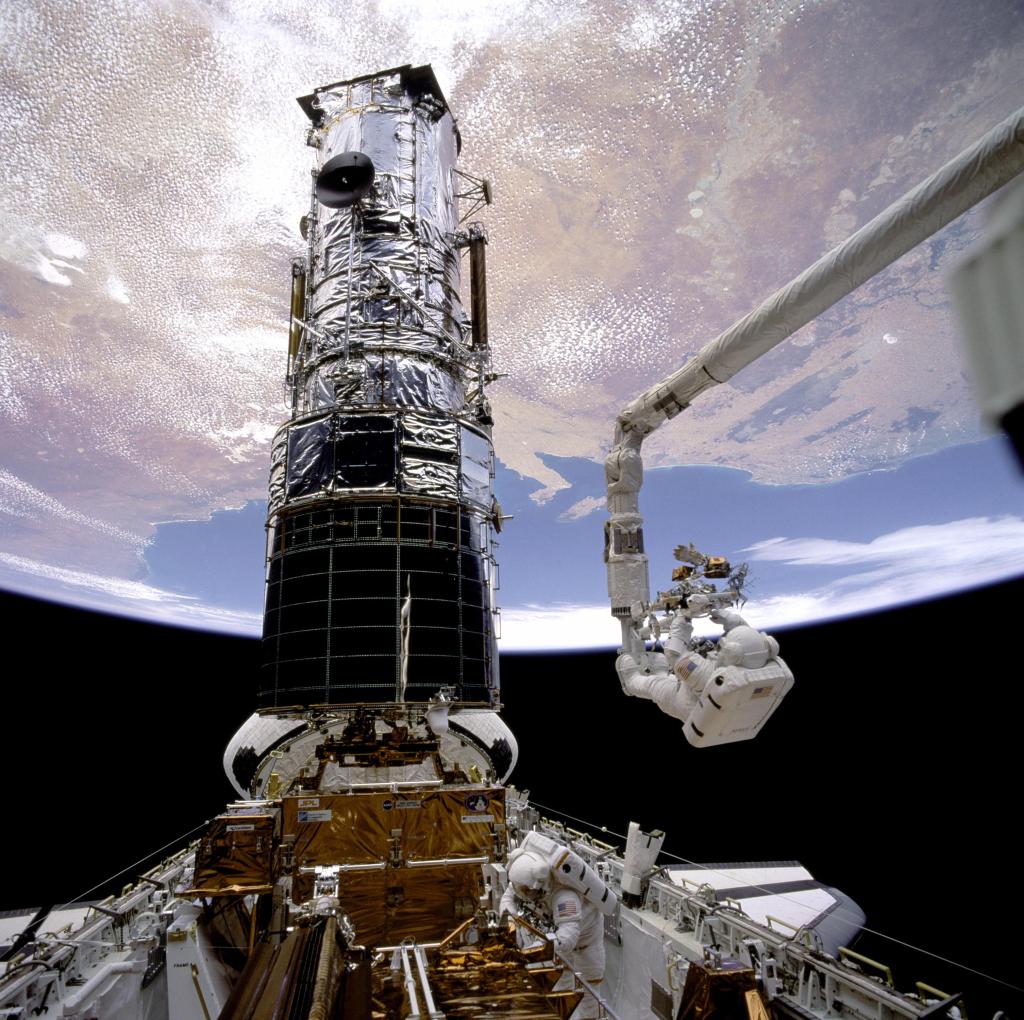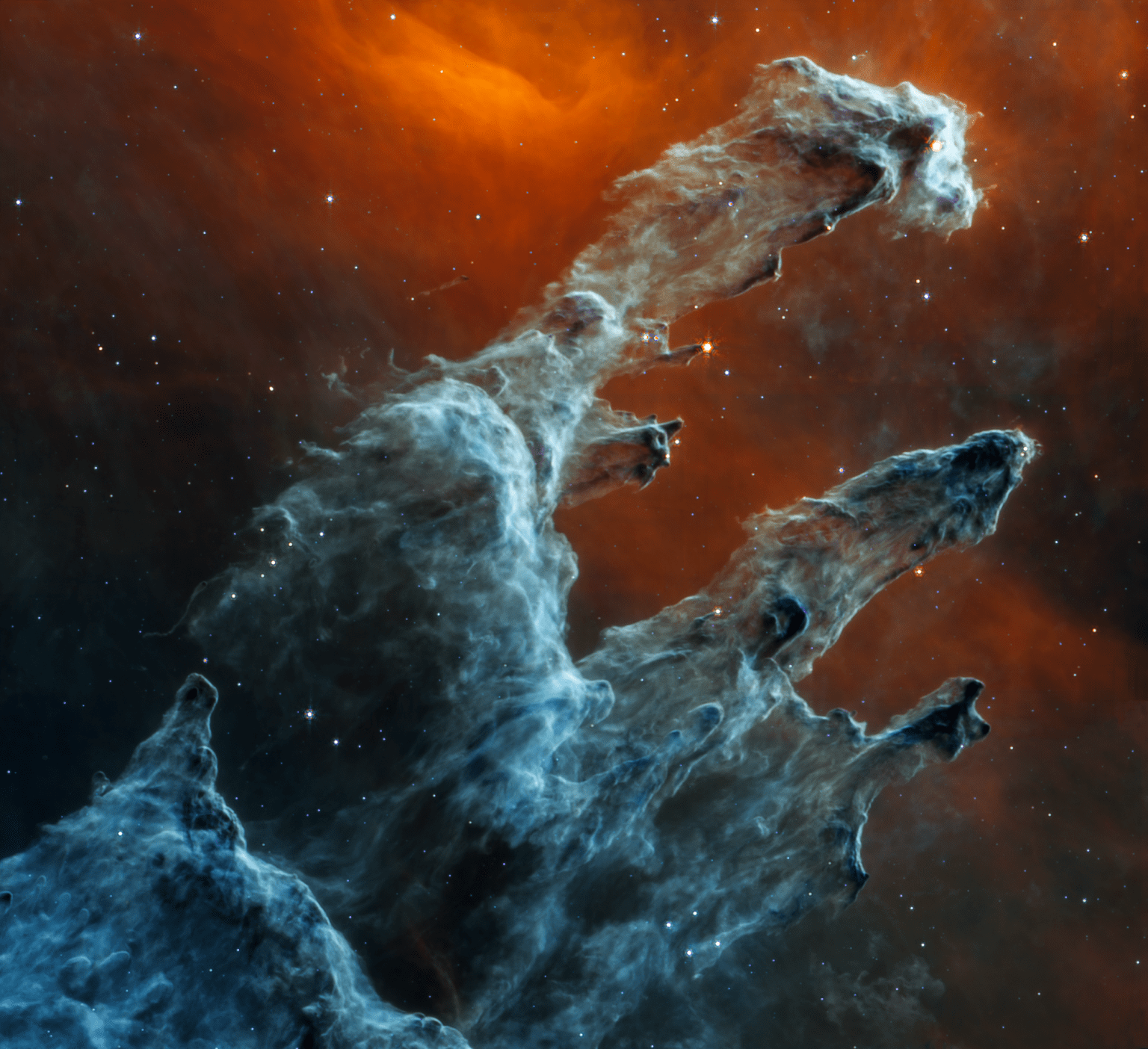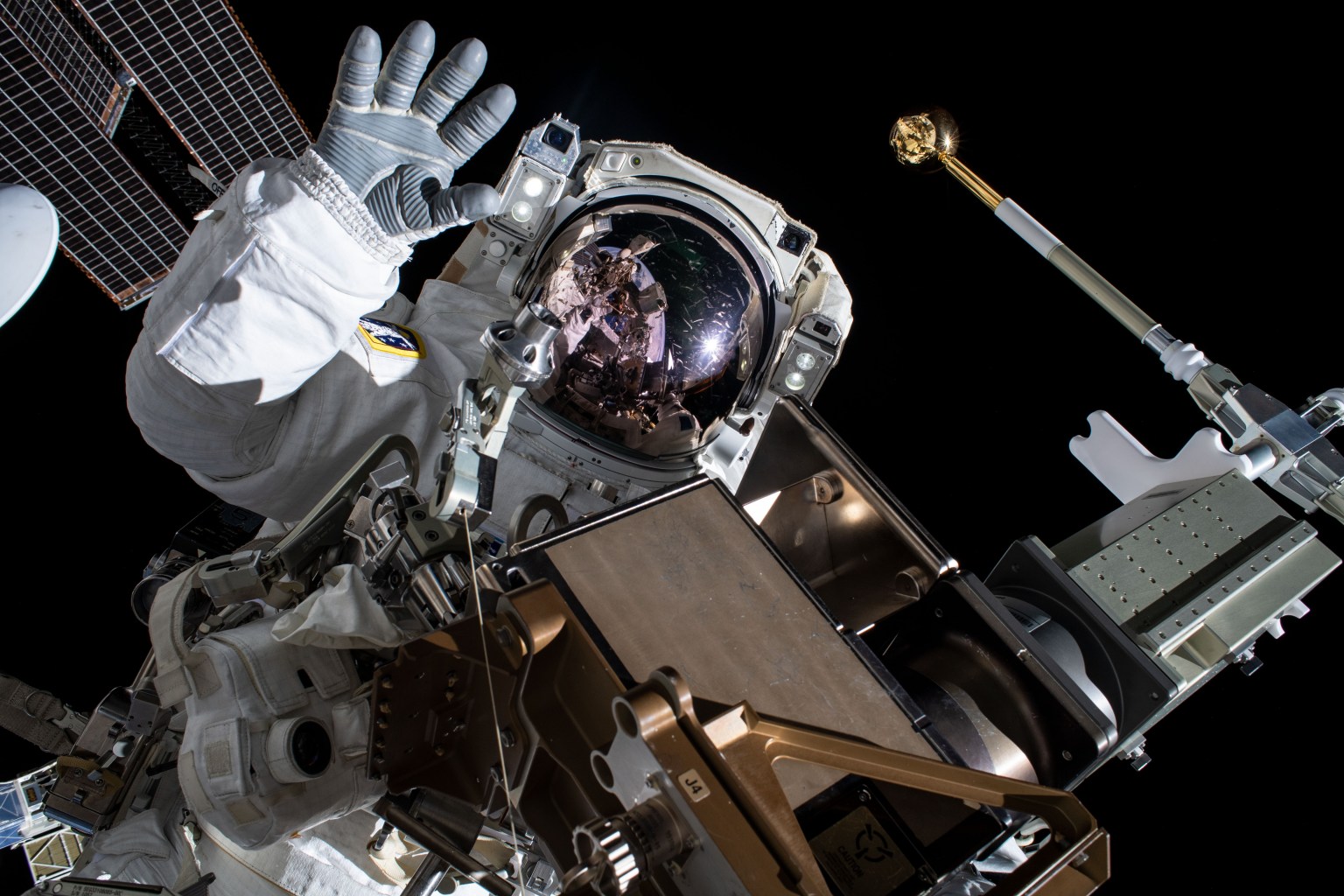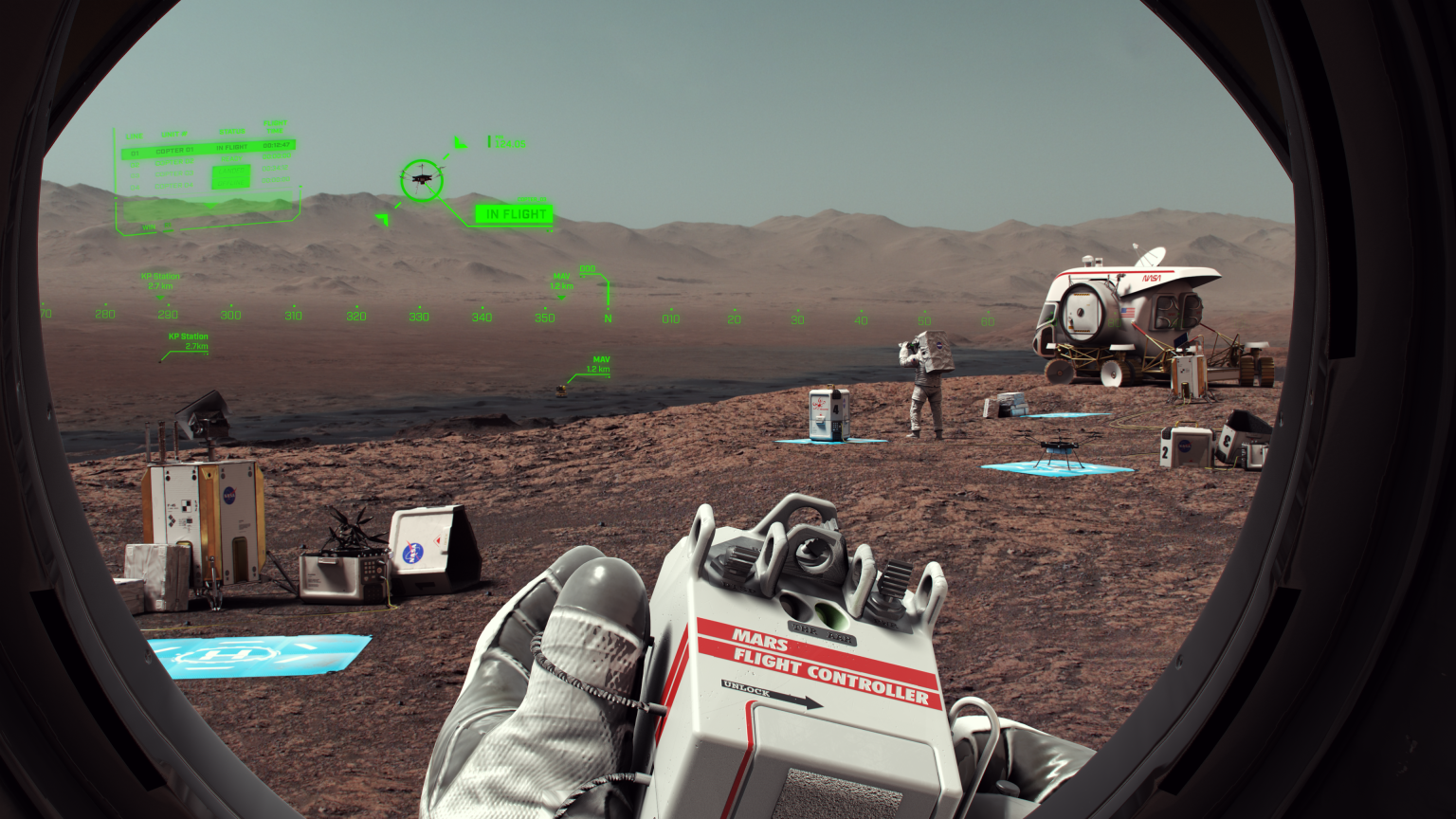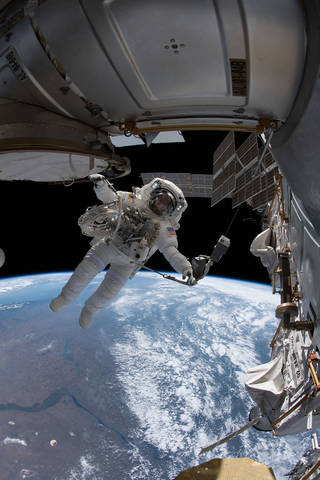
STS-102
STS-102 was the first Expedition Crew rotation from Expedition 1 to Expedition 2. The primary cargo was the Leonardo, the Italian Space Agency-built Multipurpose Logistics Module.
Orbiter
mission duration
Launch
Landing

Mission Facts
Mission: International Space Station Assembly Flight 5A.1
Space Shuttle: Discovery
Launch Pad: 39B
Launched: March 8, 2001, 6:42:09 a.m. EST
Landing Site: Kennedy Space Center, Florida
Landing: March 21, 2001, 2:31 a.m. EST
Runway: 15
Rollout Distance: 11,405 feet
Rollout Time: 84 seconds
Revolution: 102
Mission Duration: 12 days, 19 hours, 49 minutes and 0 seconds
Miles Traveled: 5.3 million
Crew
James Wetherbee, Commander
James Kelly, Pilot
Andrew S. W. Thomas, Mission Specialist
Paul Richards, Mission Specialist
Mission Highlights
A sunrise launch carried the second resident crew to the International Space Station as well as the first Multi-Purpose Logistics Module, Leonardo, full of supplies and equipment plus science racks for transfer to the U.S. Laboratory Destiny.
Joint operations between the shuttle crew and the station crews resulted in unloading almost five tons of experiments and equipment from Leonardo and packing almost one ton of items for return to Earth. Discovery’s spacewalkers — James Voss, Susan Helms, Andrew Thomas and Paul Richards — set the stage for continued expansion of the station by installing a platform that will be used to mount a Canadian-built robotic arm, the Space Station Remote Manipulator System (SSRMS), to the station on a future mission.
Discovery docked with the station at 1:38 a.m. EST on March 10. Hatches between the two spacecraft opened at 3:51 a.m. EST. All 10 crew members greeted each other for several minutes in the Destiny module. The first Expedition Two crew member to trade places was Yury Usachev, replacing Yuri Gidzenko on March 10. James Voss swapped places with Sergei Krikalev on March 11, and Susan Helms swapped with Bill Shepherd on March 14. A formal transfer of command was conducted on March 19 as Commander Bill Shepherd passed responsibility for the station to Yury Usachev.
EVA No. 1: Helms and Voss began a record-breaking spacewalk at 12:12 a.m. March 11. They prepared the Pressurized Mating Adapter-3 to be moved from the Unity module to make room for Leonardo. They removed an antenna from the Common Berthing Mechanism to allow the PMA-3 to be temporarily stowed there while Leonardo was connected to the station.
They also removed a Lab Cradle Assembly from Discovery’s cargo bay and installed it on the side of the U.S. Lab Destiny. There it will form the base for the SSRMS being delivered on a mission in April.
The spacewalk ended at 9:08 a.m. EST, marking the longest spacewalk in shuttle history at 8 hours 56 minutes.
Mission Specialist Andrew Thomas lifted Leonardo out of Discovery’s cargo bay at 11:10 p.m. EST on March 11 and maneuvered it into place on the Common Berthing Mechanism. The docking was completed at 1:02 a.m. EST March 12 when Commander Wetherbee activated the latches to seal the components.
EVA No. 2: Beginning the second spacewalk at 12:23 a.m. EST March 13, Richards and Thomas installed an External Stowage Platform for spare station parts and attached a spare ammonia coolant pump to the platform. They also connected several cables on the exterior of Destiny that were placed previously by Helms and Voss during the first spacewalk. The cable will provide heater power and control for the yet-to-come robotic arm. Duration of this spacewalk was 6 hours 21 minutes.
Crew members transferred cargo from Leonardo, including the first Station research rack, the Human Research Facility that will study the effects of weightlessness on the human body. Full transfer of systems racks was completed March 14.
Voss and Helms spent most of one day, March 15, installing a workstation for SSRMS. With Leonardo emptied of its cargo to the station, the crew packed trash, unneeded equipment and luggage into the module for return to Earth.
Shuttle and station managers extended the mission one day which eased the heavy work schedule of the crews to complete cargo transfers. On March 18 Thomas began moving Leonardo with the robotic arm at 5:40 a.m. EST. The MPLM was back in Discovery’s payload bay at 7:08 a.m. EST.
Discovery undocked from the space station at 11:32 p.m. EST on Sunday, March 19. The two vehicles were docked a total of 8 days, 21 hours, 54 minutes.
STS-102
Resources
Shuttle News
Retired Space Shuttle Locations
Shuttle Atlantis – Kennedy Space Center Visitor Complex Shuttle Discovery – Steven F. Udvar-Hazy Center Shuttle Endeavour – California Science…
Read the Story